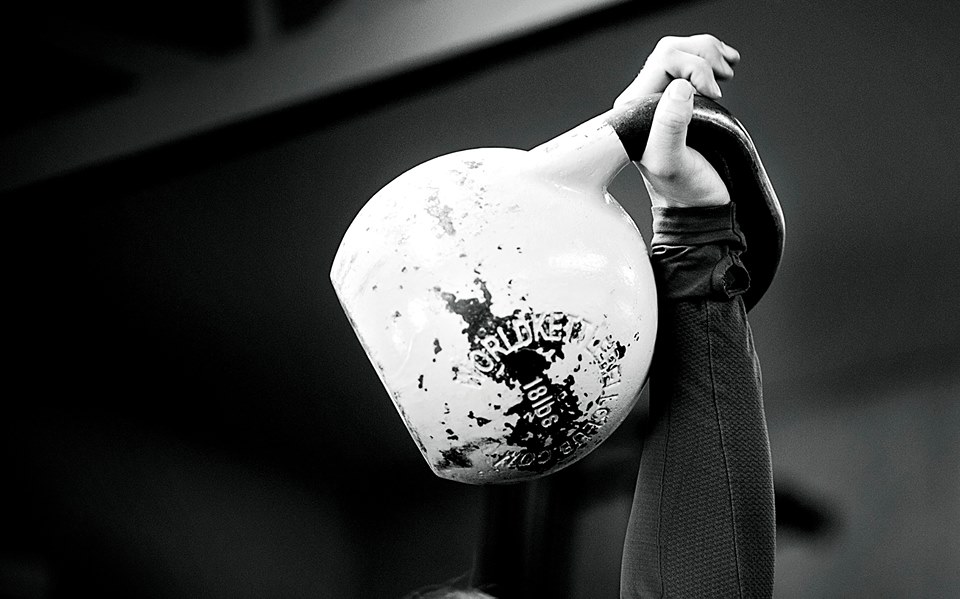Training tips and ideas to mitigate imbalance
Welcome to the club...
When a kettlebell lifter laments to me about the huge imbalance between their left and right sides, my typical response is to chuckle and say, "Welcome to the club!". That's not to undermine their frustration, but to make them realize that being uneven is normal and not the end of the world.
Of course being uneven is not something to write off as unimportant, because an imbalance in repetitions can lead to an imbalance in the body, which is the recipe for an injury. Addressing the imbalance is crucial, but it's also completely okay if your left and right side are not EXACTLY the same. From a competitive standpoint, improving your weaker side is a no brainer as it will lead to more repetitions and thus a higher score!
(But I still think it's funny how everyone seems to think they are MORE uneven than everyone else.)
Positive mindset is key to improvement
The issue of being imbalanced in repetitions or time is usually most evident in Snatch. Personally, I can do at least 30-40 more snatches on my right arm on any given day. My Snatch technique always feels sloppier on the left, but my left has greatly improved over the years. I used to get extremely frustrated with my left side and feel angry at it, like it was a person, for disappointing me. It got to the point where I was afraid of how badly lifting would feel on my left side before I even started (which obviously did not help my performance)! It wasn't until I decided to approach training the imbalance rationally and with zero emotion that I was able to mitigate my fears and find confidence on the left side.
I'm a huge believer that your mindset greatly affects everything you do. I want you to avoid the mistakes I made by having negative, angry feelings towards yourself for not being "perfect". I suggest you think of your weaker side as your "challenged" or "nondominant" side. Weaker has a negative connotation and I urge you to approach fixing the problem with a positive attitude and without mentally beating your nondominant side up for being "weak".
Below I will share with you some specific training tips and ideas on how decrease the discrepancy between right and left sides while lifting kettlebells, which can apply to any lift.
Training tips and ideas to mitigate imbalance
- Try a new technique tip on your dominant side first, THEN try on the challenged side. It's usually easier to implement new elements of technique on your dominant arm. Watching your reflection as you do lift on the dominant arm can further the effectiveness of this technique, as studies show that the mirror neurons in your brain will fire and allow your nondominant arm to "copy cat" the dominant arm.
- Use a mirror and/or video to critically evaluate technique discrepancies between right and left. Are there specific differences between sides that may be leading to the discrepancy? Adjust technique and evaluate again for effectiveness.
- Work coordination drills on the nondominant side, i.e. throwing a ball, brushing your teeth, using a fork. Sounds silly, but enhances the brain-body connection on that side of your body!
- Match the repetitions you hit on your dominant side on your nondominant side by going slower with the only goal being to make the rep count (even if it takes a lot longer).
- Complete trainings where you purposefully lift 1-2 minutes longer on the nondominant side.
- Alternate which hand you start with in Snatch training. Some days you should start with your nondominant side so you can focus on form and efficiency, and other days you should start with your dominant side so you can practice lifting through fatigue (in a competition you should obviously start with whichever side allows you to get the most repetitions).
- Work in extra focused technique work with 8-12kg. If the kettlebell weight is heavy, small nuances of technique cannot be changed. I would not recommend doing tons of extra work on the nondominant side, I would do equal repetitions on right and left, but put most of your focus on the nondominant side.
- Lift lighter kettlebells for longer. Long, light sets build technical efficiency and mental fortitude. If you are stuck at a particular length of time on the nondominant side, this can prove very useful for breaking the mental barrier.
- When all else fails in a set, simply hold rack (Jerk or LC) or overhead (Snatch) until the end of the set. This teaches you not to quit early and builds additional strength to last the time.
I hope these tips help you ease frustration and find more balance in your lifting! Remember, kettlebell lifting (like life) is a long journey that is all about enjoying the process. If you need additional help with your technique, please don't hesitate to send me an email at info@kbfitbritt.com and ask me about my technique consults and online coaching program.
